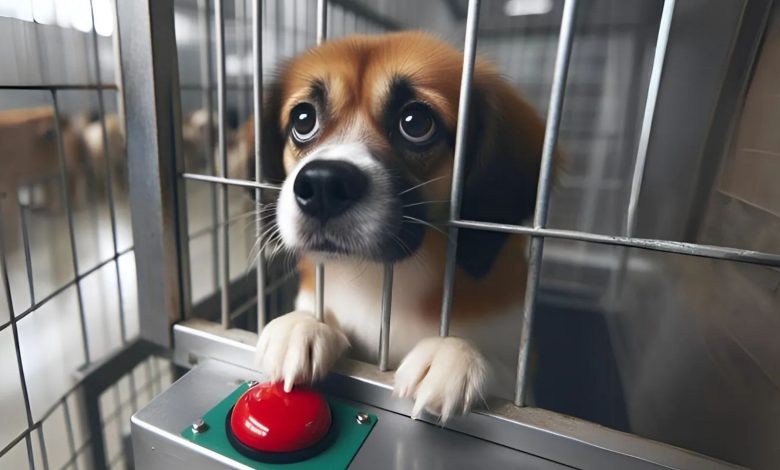The Seligman Experiment: Getting Used to Helplessness

Have you ever heard of the Seligman experiment? For those of you who haven’t heard of it, the Seligman experiment is not the first chemistry-related experiment we think of. It’s much more abstract and psychological! Let’s expand a bit more on this. Do you try again to do things you couldn’t do before or do you give up? For example, “I can’t paint. I’ve never gotten beyond stickman before.” Or do you think, “I’ve always gotten low grades in my physics exams before, it’s impossible for me to succeed in this class.”?
These are the moments when we surrender to what we couldn’t do before. This is how our body prepares itself for a possible failure and protects itself from both loss of energy and mental wear and tear. So it neither gets tired nor frustrated. Now, Seligman will show us how this motive works in a social experiment. We don’t say it beautifully. Unfortunately, this experiment did not fail to cause some harm to some innocent animals in order to achieve its goal.
What is the Seligman Experiment?
Seligman and those who accompanied him in setting up this experiment wanted to understand how much the concept of “learned helplessness ” can affect a living being. In order for this feeling of helplessness to envelop the creature, it must first be subjected to failure and this failure must be repeated over a period of time. Therefore, they take a group of dogs. They divide these dogs into three different groups. These groups are separated in the form of
- Despair Group
- Control Group
- Escape Group
First Phase
The difference between these groups is that they may have different options available to them in the same situation. The system is quite simple. At first, dogs in the escape and helplessness groups are put in cages and given electric shocks from the bars under the cages at certain times. Unfortunately, dogs are taught by bitter experience that electricity comes. For those in the escape group, there is a button inside the cage. If the dog touches this button, the shock will stop. So, in simple terms, the escape group has a chance of surviving the shock. Unfortunately, the desperation group is not so lucky. Because they do not have a switch to stop the electric shock. The control group is not present at this stage because, at this stage, only those in the despair and escape group are expected to develop awareness of the situation.

Second Phase
At this stage, the dogs are placed in a different cage. This cage is divided into two by a small barrier and the barrier is high enough for the dogs to jump over. At this stage, the helplessness and escape groups are accompanied by the control group. There is no electricity in the part of the cage after the barrier, but there is in the part before. In this part, the dog is told that a shock will be administered with a light and if the dog crosses the barrier within one minute, it will not be shocked.
At this stage, the control group, who had no previous awareness of the shock, easily jumped over the barrier and received almost no shock. The escape group, which was given the chance to press the button to stop the shock in the first stage, understood the situation in a short time and crossed to the other side, just like the control group. Unfortunately, what happened again was our despair group. They were not given a chance to escape in the first place. Therefore, most of them again felt that they could not stop the situation, surrendered to it, and did not cross to the other side. Even if some of them were moved by the shock and crossed over, they did not do so when the electric shock was repeated.

This is exactly what learned helplessness is. In the second phase, all three groups have equal opportunities, but neither the escape group, which had been introduced to the situation and given the chance to escape, nor the control group, which was only introduced to the situation in the second phase, behaved like the despair group and survived the shock. This clearly demonstrates the damage that the first phase did to the despair team.
What Do We Understand?
It’s easy to see that this is actually our mind’s way of “surviving” in order not to experience disappointment or sadness again. The problem is that this system does not always work, as this experiment proved. It is similar to the baby elephant brought to the zoo, unable to break a puny chain, and then, when it grows up to be a big elephant, it does not try to break the chain, which it could easily break.
The problem is that we do what these innocent creatures do in our lives. Even as we evolve, even as circumstances change, we too can surrender. We have to overcome this first, so that we can reconsider the obstacles we face with the conditions of the day.
References and Further Reading
Nickerson, C. (2023, November 9). Learned Helplessness Theory In Psychology (Seligman): Examples & Coping. Simply Psychology. https://www.simplypsychology.org/learned-helplessness.html
Ackerman, C. E., MA. (2023, July 6). Learned Helplessness: Seligman’s Theory of Depression. PositivePsychology.com. https://positivepsychology.com/learned-helplessness-seligman-theory-depression-cure/
Nolen, J. L. (2009, August 17). Learned helplessness | Description, History, & Applications. Encyclopedia Britannica. https://www.britannica.com/science/learned-helplessness







